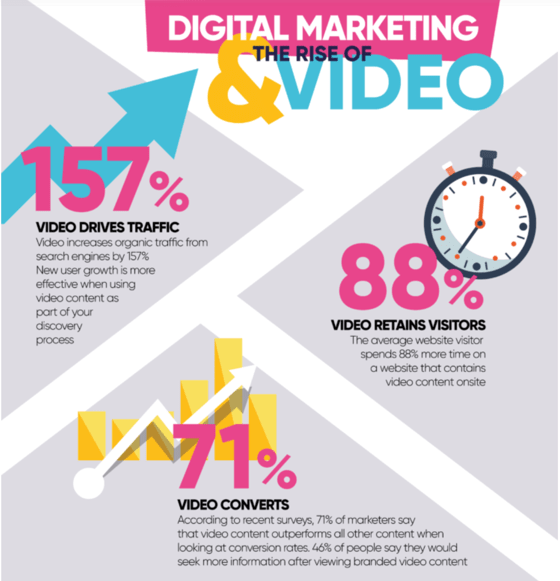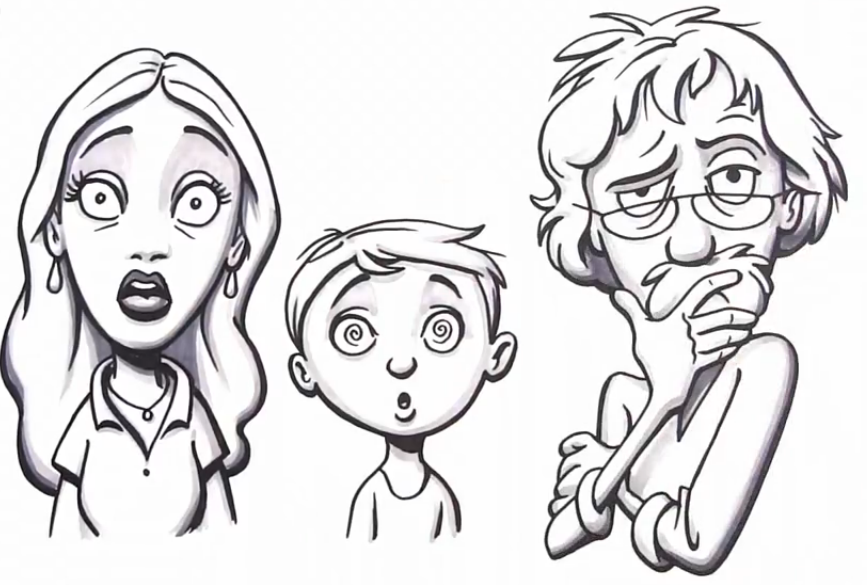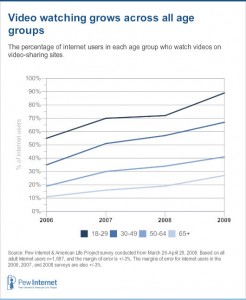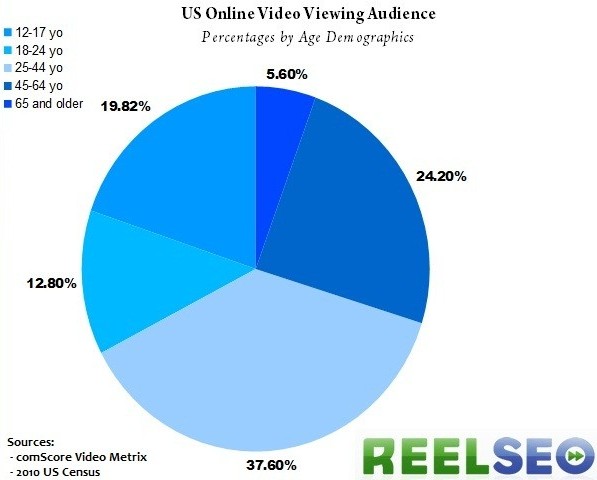by Jace Vernon | Aug 8, 2018 | animated explainer video, Creative Marketing, Emotional Connection, Marketing, Simple marketing, Social Media Marketing, Video Marketing, video online marketing, viral video, Ydraw
So, you have this spiffy new Ydraw video ready to download and share with the world.
Now what?
Don’t leave what happens next to chance. How you market your video will make a huge difference in how many of the RIGHT people actually WATCH it.
That’s where a social media marketing plan can help. If you’re thinking, “I already have a marketing plan.” Good for you. You’re already a few steps ahead.
But, if that plan doesn’t spell out exactly how you’ll take advantage of the amazingly effective, and mostly free, opportunities on social media marketing sites – then sit down and take some notes.
Your class on Social Media Marketing 101 just got started.
1. GET NOTICED:
Basically, if your business isn’t active on the main social media sites, you may not exist yet to your target consumer.
To give you an idea of how many people are regularly using the most common social media sites, here’s a quick summary of the current numbers, according to Statista:
Facebook: 2.23 billion profiles, with 1.45 billion users visiting daily.
YouTube: Over 1 billion users, with over 500 million hours of videos watched daily.
Instagram: 800 million users and adding over 100 million in the last year alone.
LinkedIn: Over 562 million profiles in more than 200 countries worldwide.
Twitter: 335 million active users visit Twitter monthly.
Pinterest: 200 million monthly active users, predominantly female.
Can you really afford to pass up that kind of exposure?
Or, better question, why would you want to?
2. PEOPLE WANT VIDEO:
Mike Henry said, “We’re operating in a world where ONE GOOD VIDEO can lead to a massive social following.”
Now you have that good video – so what do you do with it?
Not only does social media offer an incredible marketing opportunity, but posts that use video have a much higher conversion rate on all of the social media platforms. Check out just a few of the many powerful statistics on the impact of video in this infographic created by The E Word.

So, if your consumer is browsing Facebook, your video should be on Facebook. If they’re tweeting about their morning bagel, your video should be popping up on their Twitter feed. When they’re scrolling their LinkedIn at lunch, you want that video to smack them right in the face. YouTube? Instagram? Same story – different channel.
Social media allows you to deliver your video to your target consumer on a silver platter.
3. START A CONVERSATION:
You don’t want your marketing plan to be a monologue. Your target consumer really only cares about themselves. If you’re doing all the talking – that doesn’t mean that they’re doing all the listening.
Instead, put your video out there and start a dialogue. Use your video as a springboard into building a community. This will also make your brand relatable and that will attract even more followers.

4. MARKET MORE; SPEND LESS:
Did I mention that social media marketing is …. FREE? That’s right. It costs ZERO dollars to set up business profiles on social media sites and begin posting.
Now, you may eventually choose to pay for ad campaigns that will further your reach, and many companies find it very effective, but you certainly do not have to do that to get started and get your video out there.
Plus, since we already discussed how much more effective video is as a marketing tool on social media, you’ll get pretty good reach without paying another buck.
5. FREE FOCUS GROUPS:
You know the value of focus groups when branding your business or making business decisions.
Well, with social media marketing, you have access to a focus group – 24/7, 365 days a year, that never sleeps, never slows down, and is actively engaging in dialogue on what they like and don’t like.
There has never before been a greater opportunity to talk directly with your target consumer whenever you want than today – on social media.
So, gather information by reading and following their conversations. Or, utilize free tools on platforms like Sprout Social and Hootsuite, where you can access trending conversations pertaining to your target market.
Take it a step further and download apps like Instagram Insights, WhenToPost and Crowdfire to learn more about what is really engaging your target audience and when they’re online looking for it.
You can even learn about your competitor’s performance and connect with Instagram influencers on apps like Iconosquare.
And – yep, you guessed it – it’s all free.
The bottom line is – we live in unique technological times that can sometimes present challenges, but in other cases, offer you an incredibly insightful, effective, and affordable opportunity to connect with your target consumer like never before.
Leverage whatever you can to promote your video and your brand!
And, if you have any questions on how Ydraw can support you in developing your own social media marketing plan, please reach out. We can’t wait to hear from you.
by Jace Vernon | Oct 21, 2013 | Video Marketing
The Skinny on Making a Big Fat Profit: Mobile Advertising
This article was posted on Business2Community.com by Jessica Anderson
You’ve just sat down to watch TV, and instinctively you search your pockets for your cell phone or your surroundings for your tablet. Sound like a familiar scenario? While TV viewership is on the decline, video viewing on mobile devices is on the rise. According to a survey by YuMe, aside from eating, the biggest distraction from TV watching is web browsing. This means that a large chunk of consumers are just begging to be advertised to while they’re being advertised to! And if your business has been slow to jump on the mobile advertisement train, you’re potentially only grabbing up about half of the audience’s attention. Here are some stats that prove that mobile advertising is the way to go:

Where & How
When it comes to where mobile users watch video, 100% watch from the comfort of their own home. 66% watch mobile video while on vacation, 36% while at a friend’s place, 22% while commuting or at work and 13% while eating at a restaurant. Of these mobile viewers, 65% spend over an hour per day watching video. If you’re not good at math, that’s over 7 hours per week; and if you’re still trying to catch up, that’s almost one third of a whole day! Cue the “I can remember when we used to spend all our free time outside” and all that jazz – but the point is, you desperately need to make your advertising compatible with smartphones and tablets.
Read more…
Thanks for checking out Ydraw’s blog. Let us know if you have any questions, comments, or concerns for us here at Ydraw. We love hearing from our audience, so drop us a line. You know you want to, and we want you to too!

by Jace Vernon | Sep 11, 2013 | viral video
5 Reasons Jimmy Kimmel’s Twerking Girl on Fire Video went Viral – and How Yours Can Too
This article was originally featured on Business2Community.com by Jessica Anderson
Monday night on his show Jimmy Kimmel revealed that he was the genius behind the video that received more than 9 million views in less than a week – Worst Twerk Fail Ever – Girl Catches Fire! In his reveal segment he mentioned that they did nothing to advertise the video, he simply uploaded it to YouTube and, in his words, “Let the magic happen.” However, there are a few key things about the video that helped it get big in the first place – proven methods you can apply to your own videos to boost viewership.
Humor
The public loves funny videos, and Jimmy’s video was hilarious. The fact that it’s an average young college-aged girl makes it relatable, and somehow realizing that it could’ve been anyone tickles our funny bones. Even now, knowing that it was all staged, it is still pretty funny. If you want your video to go viral, it better make people bust a gut and want to show everyone – or at least chuckle a little bit.
In the Now
Viral videos almost always have something to do with current pop culture. It seemed like one day all was relatively normal in the world and the next morning we woke up and “twerk” was in the dictionary. Jimmy Kimmel used this increasingly popular shake-your-booty club move and ran with it. He knew most YouTube users were interested in twerking, wanted to watch it, wanted to learn how to do it, or wanted to just figure out what it was all about. I’m sure if he would have done a “DIY installing a refrigerator – man catches on fire” it would have been funny, but it probably wouldn’t have had over 9 million views in less than a week.
The Unexpected
All the best videos have some sort of unexpected twist. In the case of Twerking Gone Wrong the clincher was Girl Catches Fire. The video would have been great if it ended with the roommate entering through the door and knocking the girl on the ground – but the flames were just the surprise that video needed to send it shooting through inboxes and Facebook pages across the internet.
Title
Of course, if the video would have been titled only “Twerking Gone Wrong” it wouldn’t have been picked up as quickly. If it would’ve been titled only “Girl Catches Fire,” how would people have differentiated it between the hundreds of other YouTube videos entitled “Girl Catches Fire?” The key to the success of Jimmy’s video is the fact that it a couple different mini titles smashed together to let viewers know exactly what is in the video.
Tags
When a YouTube user wants to find a video but doesn’t know the title, they can type in keywords into the search box – and if your video doesn’t have any tags, your video won’t get pulled up in the searches. Jimmy’s video is tagged with several different keywords, including sexy, girl, lady, college, dorm, hot, a**, butt, dance, twerk, twerking, cute, beautiful, shake, university, pretty, fire, accident, fail, epic, vma, robin thicke, miley cyrus, etc… Only a handful of the tags are actually related to the video, and that may seem like cheating – but the beauty of YouTube is that the tags are really hard for viewers to find. So if a viewer was initially searching for “dog obedience classes” they can easily end up watching your online marketing video about which mattress is the best fit or a video of a twerking college girl catching fire.
The Moral of the Story:
Jimmy Kimmel probably wanted to prove to the world how easily a video could be picked up by millions of internet users and even several news stations without doing any extra work beyond uploading it to YouTube. However, he actually did do a little work, and your video has the potential to experience the same success as his so long as you follow the above basic rules of viral videos.

by Jace Vernon | Mar 27, 2013 | Video Marketing, video online marketing
The demographic reach of online video – who views most? / part II
…And we’re back. Today’s segment is Part II of the Demographic Reach of Video Marketing series.* Sit tight, all you video marketing enthusiasts, as we dispel some rumors about who and how many people are online streaming video:
Last week I suggested that the bulk of online video viewers are in the 18-35 age range. Upon further study I discovered this is mostly true. But there were a few categories of consumers that are often overlooked, and I found some surprising statistics about them:

[image from pewinternet.org]
Though young adults are well aware they can catch up on their favorite media with the click of a mouse or swipe of a finger, older demographics are slowly realizing they can watch their favorite clips of Coach for free on YouTube or entire episodes for a mere $8/month on Netflix; saving them thousands per year on their satellite subscriptions (you’ve heard nothing good is ever on TV these days anyway). Though their numbers may seem significantly smaller than their young adult counterparts, the adult and elderly demographics are spending more time online each year (41% compared to 90%, respectively).
You may also be surprised to hear that teenagers do not make up the bulk of online viewers. Yes, that does mean they’re not the ones watching all those cat videos. That’s us.
Teenagers make up only 5.6% of online viewers, however once they pass into the 18-35 threshold, they tend spend about 14% more time online.
Take a look at this graph created by ReelSEO:

According to ReelSEO, the largest demographic of online video viewers are in the 25-44 age range. This holds pretty true with what I suggested in last week’s article. However, the second largest group is not the age group younger, but older. Consumers aged 45-64 spend almost double the amount of time online as young adults. Which can only mean this:
Though they’re still slow on the road, the adults and the elderly have the money and the fastest internet speeds – and that deserves some attention.
+Jessica Anderson can’t wait to spend more time browsing online and dropping dough.
*series is a somewhat loosely used term here.

by Jace Vernon | Mar 22, 2013 | video, Video Marketing, video online marketing
Demographic reach of video – almost everyone views, but who views most?
Video marketing is great for everyone, but it is especially appealing to the young adult (under 35) demographic. Roughly 70% of consumers aged 18-30 are regular online video viewers. That’s a large percentage, and here are three reasons why this stat is totes good news for your business, brah:
1. Fantastic Plastic
Young people usually don’t have a lot of money, but they also don’t have anyone to tell them how or how not to spend it – and even if they did, they don’t really have to listen, do they? This means you’ve got a better shot at coaxing them to give you their money than you do an elderly senior who has scrimped and saved his or her whole life just for a comfortable retirement.
2. Full-On Addiction
While some seniors are having conniptions over how to work them darn smart telephones and computer boxes, young people have them permanently embedded into their palms. Young adults are so passionate about technology that they’ll wear it as eyeglasses – they can watch your marketing video as they walk right into a streetlamp pole.
3. In a Way, Ingenuitive
Young people are lazy (wait a minute now, hold your britches); they’re also smart. If, while browsing YouTube at the office, they find there is a product out there that will make their lives easier – they’ll usually buy it – freeing up more time to watch more video work on meeting that deadline.
This post may over-glamorize the gullibility of young adults and their eagerness to spend – but the main points are these: this demographic watches video, and they watch it often. If they have money, they’re usually looking to spend it. They’re basically carrying around a mobile advertising device everywhere they go. If you don’t have a marketing video yet – dude, what’s your deal? YOLO (your onlookers live online)!
* * * * * * * * * * * * * * * * * * * * * * * * * * * * *
Hold on… don’t go dismissing the middle-aged and the old-timers, there is research that suggests they make up a pretty significant chunk in Youtube views, too. Stay tuned – more on that subject to come.
+Jessica Anderson would like you to know she does not use the terms “totes,” “brah,” and “yolo” on a regular basis.







